
“Chirp!” says a big-eyed bird; “Slurp!” responds the anteater. Animals both familiar and more exotic greet each other with one rhyming sound on opposite sides of each colorful spread.
Hi! (Animal Sounds)

From 10 to one, guinea pigs celebrating a birthday are eliminated one-by-one through recognizable (but minor) disasters. With a wish, however, the 10 are reunited to continue the playful celebration.
Guinea Pig Party

From morning to bedtime, cuddly animals echo young children, their feelings and appearance. Rhythmic language and soft, textured illustration add to the fun and verve of the day.
Funny Face, Sunny Face

One by one, five googly-eyed little chooky chicks come together to pull a stubborn worm but need the help of a big rooster. Energetic language and jaunty illustrations reveal the surprise.
Chooky-Doodle-Doo

A puppy meets different animals asking each if she is his mother. Each responds in the negative but names her young — calf, duckling, etc. — until the puppy and his mommy are reunited.
Are You My Mommy?

What can you see at the beach? Lift the flap to find out then make repeat the animal’s sounds in this bright, playful book sturdy enough for young hands.
Arf! Arf!
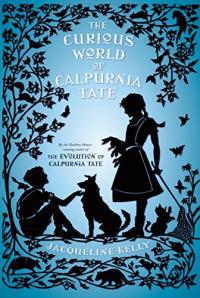
Girls didn’t always have the freedom to choose what they wanted to do. This is certainly true for Callie Tate, the only girl in her family. How she follows her interests and deals with not being taken seriously is revealed in rich, well-paced language. Callie’s story started in The Evolution of Calpurnia Tate though both books can be read without the other. Both will appeal to sophisticated readers.
The Curious World of Calpurnia Tate
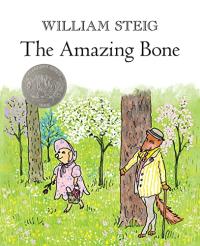
Pearl, a bonnet-wearing pig in pink, finds a magic bone that fell from a witch’s basket. Can she and the magic bone save Pearl from the jaws of a hungry fox? Cartoon illustration and exceptional language make this a must to read aloud.
The Amazing Bone
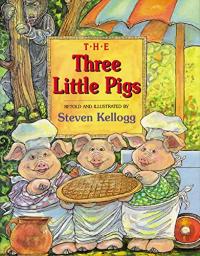
Serafina Sow returns from her retirement in the Gulf of Pasta to help her three pig offspring to defeat the big bad wolf, Tempesto. Elements of the more traditional story are here (houses of brick, straw and sticks) but made fresh and funny (such as the family business of waffle-making) in this creative recasting of an old tale illustrated in the artist’s signature style.
The Three Pigs
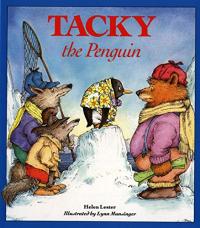
Tacky is an odd bird, very unlike his friends and colleagues. But it is Tacky’s peculiarities that save he and his friends from hungry predators. Humor is created by offbeat illustrations of Tacky’s behavior and clever language.
Tacky the Penguin
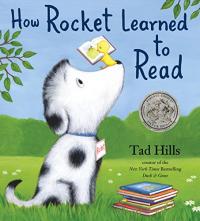
A tenacious bird finally inspires Rocket, a small white dog with black spots, to learn to read and spell. Children will empathize with Rocket as they see the expressive illustrations and hear the straightforward telling showing the passage of seasons but Rocket’s gradual ability to read.
How Rocket Learned to Read

Cheerful, childlike depictions of Maria and her much loved llama set the familiar rhyme, “Mary Had a Little Lamb”, in a Peruvian village. The little white llama follows Maria to school, makes the children laugh, but with a distinctive and unique setting and characters in a familiar cadence.
Maria Had a Little Llama/Maria tenia una llamita

Little Llama Llama has a major meltdown when he tires of shopping with Mama in the shop-o-rama. But Mama Llama is smart and figures out how do end the llama drama. The rhyming text shares not only a common experience but a great deal of llama wisdom all told with good humor and rhyme.
Llama Llama Mad at Mama

Peekaboo! Lift the paws and what do you see? Boldly colored, textured, cuddly animals giving — and getting — soft kisses to the reader. Ideal for sharing one-on-one, this predictable, repetitious, and interactive book has become a modern classic.
Peekaboo Kisses

What can you “peek-a” through the die-cut window? Does it “moo”, say “boo” or could it be YOU? Turn the page and find out! A predictable format and bold illustrations are sure to engage and delight.
Peek-a Who?

A new baby creates lots of excitement and all the animals want to kiss the baby duckling! Black pages with bold white lines depict the animals with splashes of color to highlight the joy and a repeating text makes this just right to encourage young children.
I Kissed the Baby!

Won Ton the cat is back with a new arrival: a puppy! How the adult cat and small dog get on — or not — (until ultimately they learn to live in harmony) is told in haiku. The staccato language of 17 syllable form adds humor and verve to ideally complement the expressive illustrations.
Won Ton and Chopstick

The poem encourages readers to “Spread your feathers,/sweep up the sun,/ride the wind and explore.” When combined with stunning photographs of birds, many in motion, the natural world comes into crisp focus for a unique, lyrical exploration of North American birds.
Sweep Up the Sun

Short poems about animals appear in English and Spanish accompanied by textured illustrations reminiscent of folk art. An author’s note reveals that she is neither a poet nor native Spanish speaking but was launched into both Spanish and poetry when she discovered the work of Pablo Neruda.
Flutter and Hum: Animal Poems / Aleteo y Zumbido: Poemas de Animales

Forest animals “live as neighbors” and survive by building. The homes and their inhabitants are presented in stunning, earth-toned pop-ups accompanied by a brief but informative and engaging text.
Welcome to the Neighborhood

Baseball fans Mike and Kate solve the mystery surrounding the lackluster play of their favorite rookie. Fans of baseball are sure to enjoy this easier to read mystery, the latest in an appealing series.
The Rookie Blue Jay

A word on one side is illustrated on the opposing page of each spread. Lift the sturdy flap, and the egg becomes a chick, the acorn becomes an oak tree, etc. Even a very familiar caterpillar becomes a handsome butterfly in this thoughtfully presented glimpse of spring things.
How Things Grow

Hoppy, a small gray rabbit, uses his five senses to find out if spring has arrived yet. When it does, he calls his rabbit friends to share it with him. A recap of the five senses and what they do (and how Hoppy used them) finishes this lively look at a new and colorful season.
Hooray for Hoppy

As Maurice’s mother begins to hibernate, the bear cub impatiently goes out to find spring. Other animals — and readers — will recognize Maurice’s mistaken token of spring and enjoy the lush collage illustrations of the season when it finally arrives.
